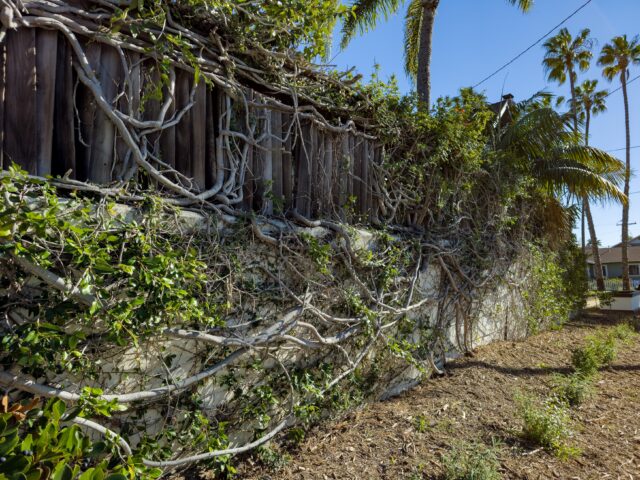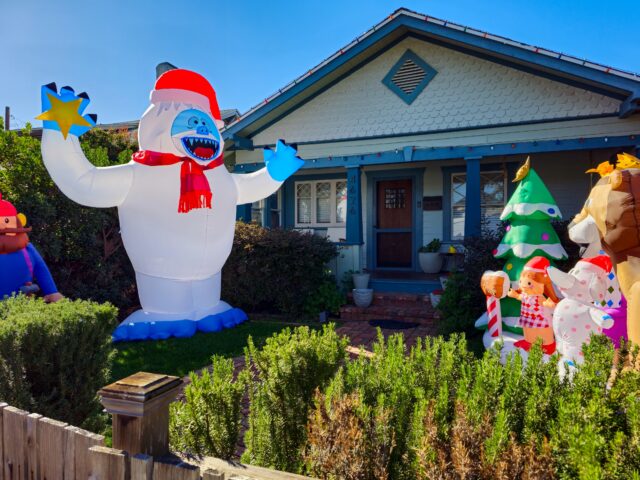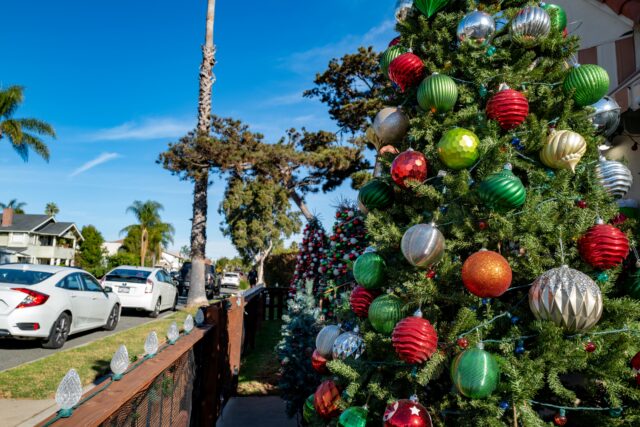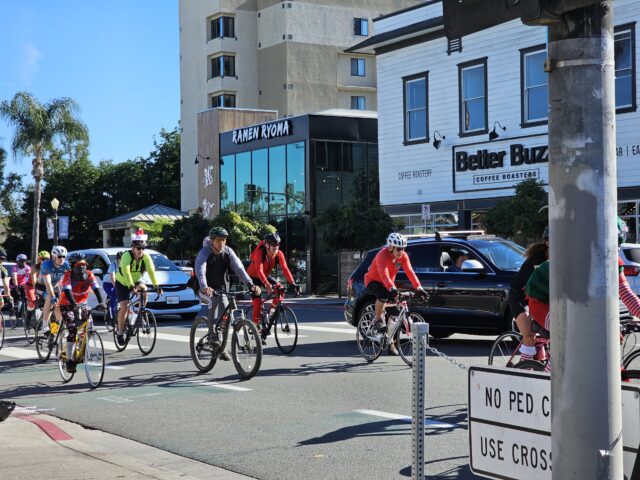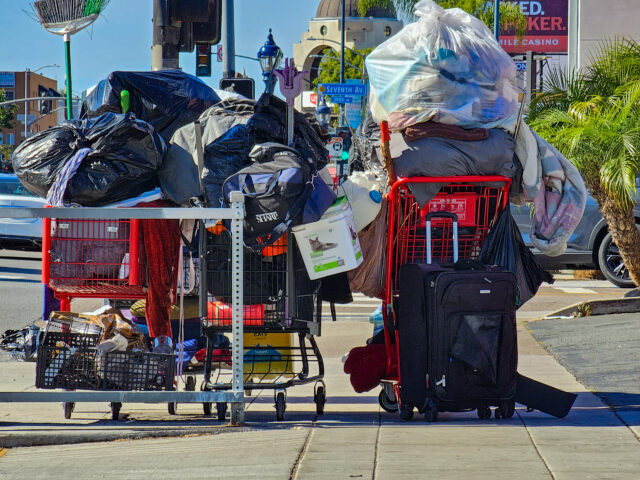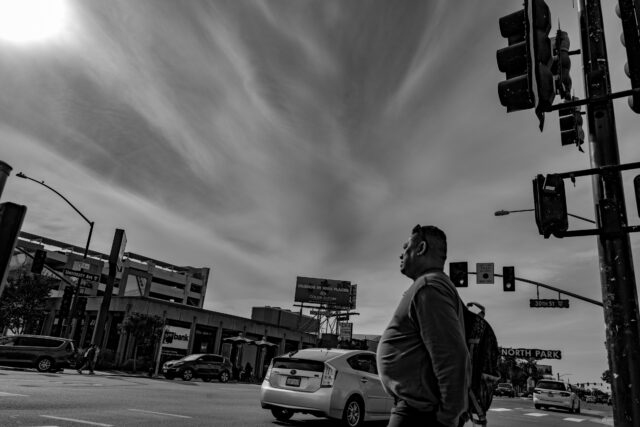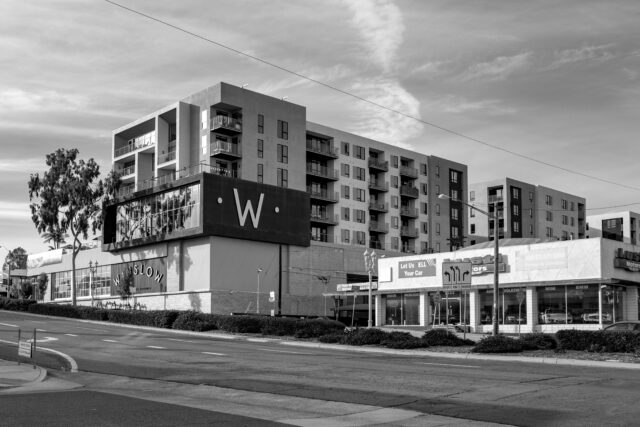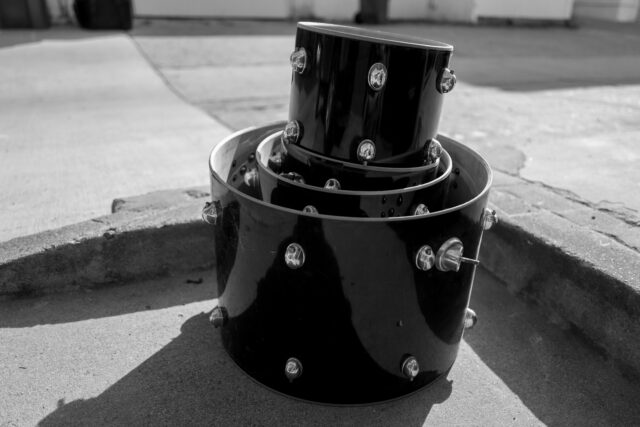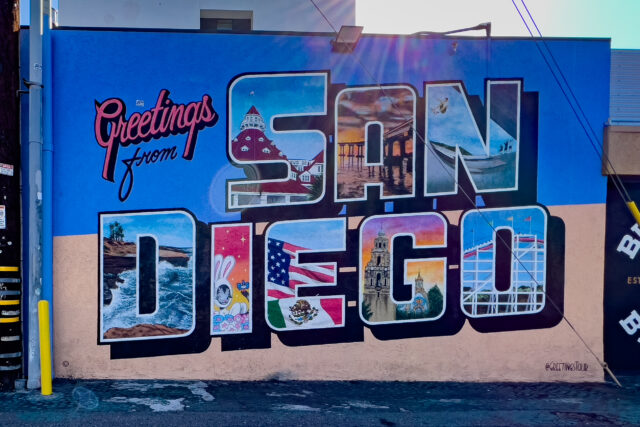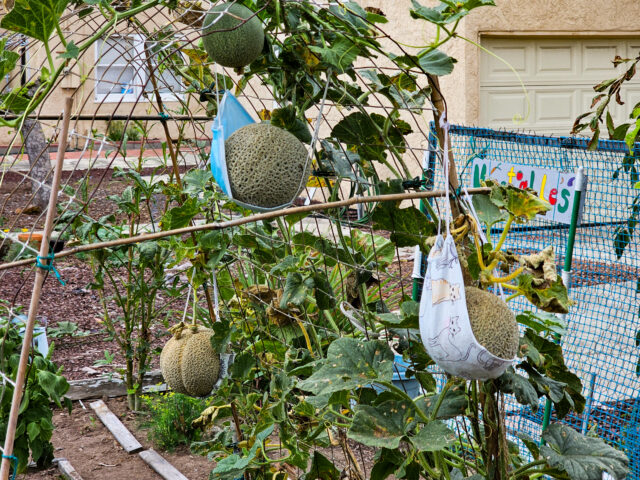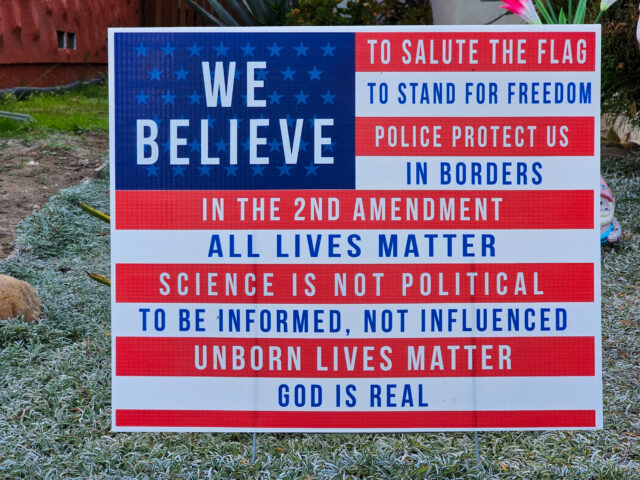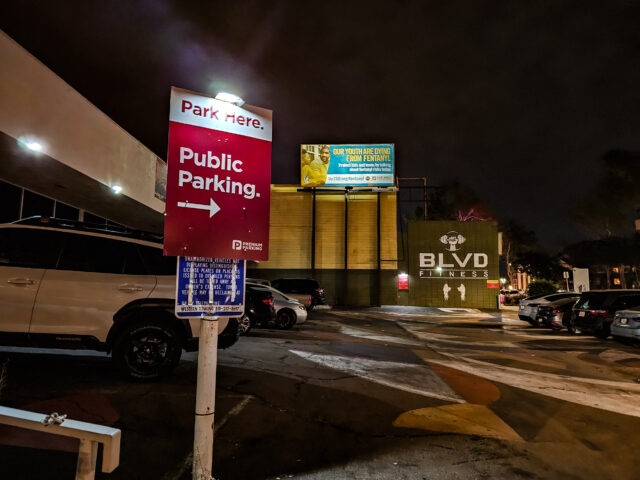Several properties in my San Diego neighborhood of University Heights are undergoing or have undergone major renovations lasting years. Some started before or during SARS-CoV-2 (severe acute respiratory syndrome Coronavirus 2)/COVID-19 lockdowns. Post-pandemic, construction delays, increased building costs, and lingering supply shortages could explain why these projects take so long.
Today, I stopped to gawk at a magnificently striking overgrown wall that had previously gone unnoticed. The main house and front lawn area have been a noisy construction zone for so long that I either walked by briskly or on the other side of the street. What an overlooked visual treat! Neither the Featured Image, nor the companion photo, adequately capture the scene.
